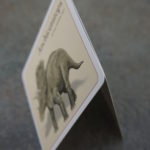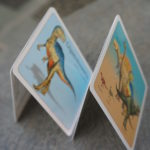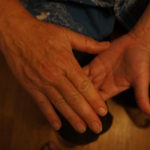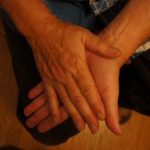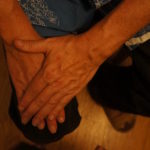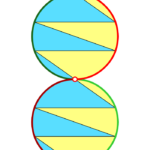 An excellent literary description of this process can be found in Volume 6 of The Incorrigible Children of Ashton Place (pg. 258) when the ditzy, and pregnant, Lady Constance gets lulled into maternal feelings by learning how to knit with some sympathetic characters:
An excellent literary description of this process can be found in Volume 6 of The Incorrigible Children of Ashton Place (pg. 258) when the ditzy, and pregnant, Lady Constance gets lulled into maternal feelings by learning how to knit with some sympathetic characters:
In this quiet way, a change in the lady’s thinking took place. Not all at once, with shouted arguments and a big to-do, but in the more usual way people change — bit by bit, starting with a tiny, acorn-sized willingness to try something new, followed by patient repetition, until what once was so uncomfortably foreign and strange no longer feels strange at all. Soon it was commonplace to find the five knitters peacefully gathered in the baby’s room, needles click-clacking away.
There are various ways to understand how these categories develop as sequences. Some ways are part of our everyday lives, such as the development from toddling (one step at a time) to walking (step – counter-step, step – counter-step) to skipping (incorporating bi-pedalism into a more complex pattern). Others are embedded in more specific skills such as the visual and auditory analogies described below:
Here is a visual analogy, using card stacking:
Once you have the basic pattern, recurrence allows you to make it much larger (with a steady hand) and vary it to mimic various architectural themes.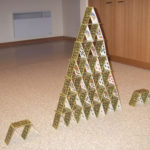
Now for an auditory analogy. Since this website does not have sound, this one will require a bit of imagination.
Sit in a chair with your legs out straight and your knees bent 90 degrees. Place each hand on its same-side knee. Since I am right-handed, I will lead with the right, but if you are left-handed, you can switch the sides.
Formation: With your hands on your knees, lift your right hand and thump it down on your knee. That thump is the beat of a percussion instrument (called body music). Do it again and it sounds pretty much the same, but each beat is a separate sound and does not form a recognizable pattern. Now switch sides and do the same with your left hand. Then randomly thump left or right without keeping time. A definite sound but an undefined pattern.
Comparison: thump twice with your right hand, skip a beat, and then thump twice with your left hand. Now the beats are timed and have a rhythm. You can keep repeating this, or add a thump to the right with each iteration. This adds some variation, but is still rather clunky and doesn’t have swing. Not very moving and certainly not danceable (unless you do the robot).
Relation: This one is the trickiest, but I am sure you will get it. Put both hands side by side over your right knee. Turn your left hand up with your right hand turned down over it. Before you thump your right knee with your right hand, you are going to slap the left palm on the way down, thump the knee, then thump the right hand with the left hand (your left hand needs to stay on your right side to do this). Do it a few times and then speed it up. The most efficient way to speed it up is to shorten the distance between the hands and the knee so that the beats are right on top of each other.
Do it fast enough and what do you get?
GALLOPING!!
Now galloping is one of the most favorite celebratory rhythms and is definitely danceable. A favorite of mine using this rhythm is Peter Gabriel’s “Solsbury Hill” (galloping starts at the 1:17 time) — it is no coincidence that Gabriel founded WOMAD (World of Music and Dance) to launch his collective of international musicians (demonstrating his understanding of the roots of music in dance and storytelling events around the communal fire). Besides, a good gallop will put a smile on the face of any pony-loving girl.
A reviewer of this article commented that it contains “some nice, but loose metaphors.” I like nice metaphors (like nice people), and I prefer my metaphors to be relatively loose rather than tight. A loose metaphor will leave off easily, not snapping back at you. But a metaphor that is too tight can snap at the “turning of the screw” as we “clock in” the metaphor. “Ouch!!” — it got me even though I wasn’t using power tools!!
